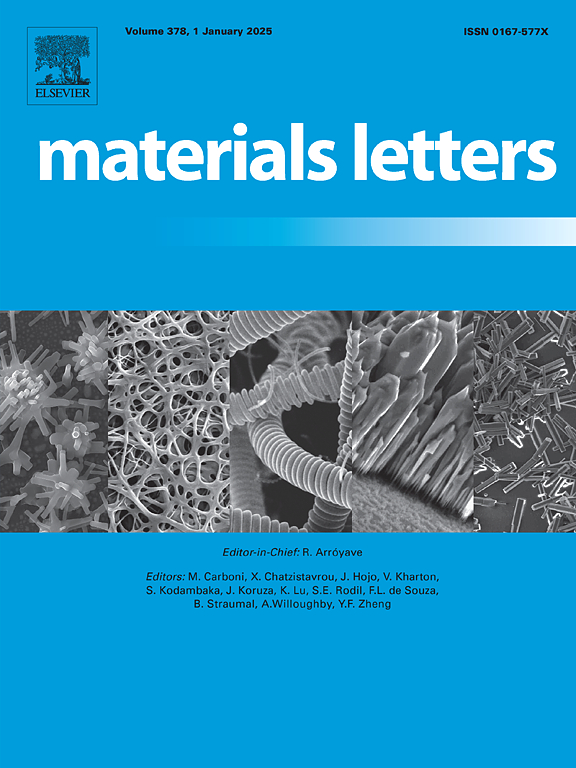Electrochemical properties of treated marcasite sludge from jewelry production process
IF 2.7
4区 材料科学
Q3 MATERIALS SCIENCE, MULTIDISCIPLINARY
引用次数: 0
Abstract
The current trend is towards recycling and reuse of industrial solid waste to mitigate reliance on landfills. This research investigates the recycling of marcasite sludge (MS) from the jewelry industry for its potential application in electrochemical devices, particularly sensors. It is composes of pyrite (FeS2), cubic zirconia, and szomolnokite (FeSO4⋅H2O). Hydrothermal treatment at 180 °C for 4 h with varying amounts of sodium thiosulfate pentahydrate (Na2S2O3⋅5H2O) was employed to convert sulfate compounds in the sludge to FeS2, followed by calcination to remove excess sulfur. X-ray diffraction (XRD) analysis confirmed the complete conversion of FeSO4⋅H2O to FeS2. The electrochemical capacitance of a treated MS (TMS) modified screen-printed carbon electrode (SPCE) was investigated. The results show an enhancement of the electrochemical capacitance of SPCE after modification with TMS. This study explores the potential for recycling waste in high-value electrochemical applications.
求助全文
约1分钟内获得全文
求助全文
来源期刊

Materials Letters
工程技术-材料科学:综合
CiteScore
5.60
自引率
3.30%
发文量
1948
审稿时长
50 days
期刊介绍:
Materials Letters has an open access mirror journal Materials Letters: X, sharing the same aims and scope, editorial team, submission system and rigorous peer review.
Materials Letters is dedicated to publishing novel, cutting edge reports of broad interest to the materials community. The journal provides a forum for materials scientists and engineers, physicists, and chemists to rapidly communicate on the most important topics in the field of materials.
Contributions include, but are not limited to, a variety of topics such as:
• Materials - Metals and alloys, amorphous solids, ceramics, composites, polymers, semiconductors
• Applications - Structural, opto-electronic, magnetic, medical, MEMS, sensors, smart
• Characterization - Analytical, microscopy, scanning probes, nanoscopic, optical, electrical, magnetic, acoustic, spectroscopic, diffraction
• Novel Materials - Micro and nanostructures (nanowires, nanotubes, nanoparticles), nanocomposites, thin films, superlattices, quantum dots.
• Processing - Crystal growth, thin film processing, sol-gel processing, mechanical processing, assembly, nanocrystalline processing.
• Properties - Mechanical, magnetic, optical, electrical, ferroelectric, thermal, interfacial, transport, thermodynamic
• Synthesis - Quenching, solid state, solidification, solution synthesis, vapor deposition, high pressure, explosive
 求助内容:
求助内容: 应助结果提醒方式:
应助结果提醒方式:


